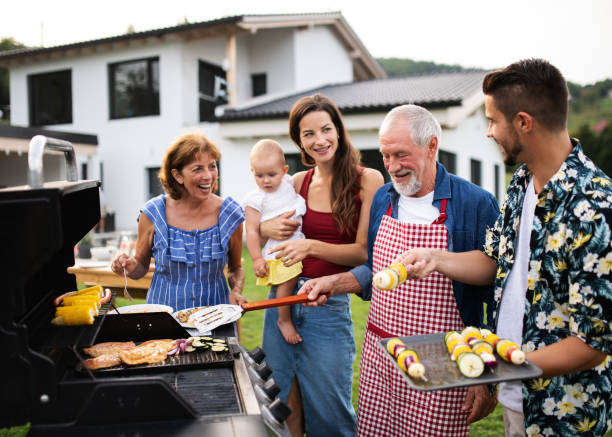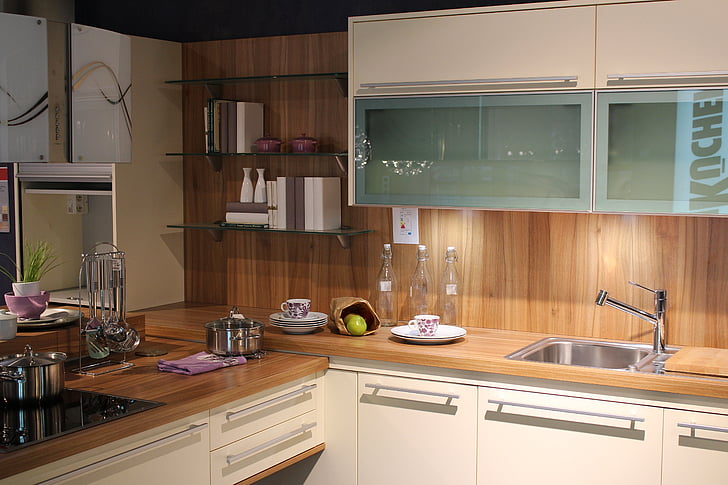
1. Understanding Food Label Machine Technology
Food labeling plays a crucial role in ensuring consumer safety, providing product information, and complying with regulations. To achieve efficient and accurate labeling, businesses rely on food label machine. These machines utilize advanced technology to streamline the labeling process and ensure consistency in label placement and information.
The Importance of Food Labeling
Food labeling serves several important purposes. Firstly, it helps consumers make informed decisions about the products they purchase and consume. By providing information about ingredients, nutritional content, allergens, and more, labels enable consumers to choose products that align with their dietary needs and preferences.
Additionally, food labels are essential for complying with local and international regulations. They ensure that manufacturers properly disclose key information, such as expiration dates, product weight, and any potential health or safety warnings. These regulations exist to protect consumers and promote transparency in the food industry.
Different Types of Food Labeling Machines
There are various types of food labeling machines available, each designed to meet specific labeling requirements and production volumes. The two main categories of labeling machines are manual and automatic.
Manual labeling machines are suitable for small-scale operations or businesses with limited label volume. These machines require manual placement of labels on products and are often operated by hand. However, they are cost-effective and can still improve labeling accuracy compared to manual labeling methods.
Automatic labeling machines, on the other hand, are ideal for high-volume production environments. These machines automate the label application process, offering increased speed and efficiency. Automatic labeling machines can handle large quantities of products and are available in various configurations, including wrap-around, top labeling, and front-and-back labeling machines.
How Food Labeling Machines Work
Food labeling machines operate by following a series of steps to ensure precise and consistent label application. While the specific mechanisms may vary depending on the machine type, the general process includes label loading, product feeding, label application, and label verification.
Label loading involves placing the roll of labels onto the machine and threading them through the necessary components. The machine then feeds the products into the labeling station, where the labels are applied onto the containers or packaging. After application, the machine verifies the accuracy of label placement and ensures that all necessary information is included.
Modern food labeling machines often incorporate advanced technologies, such as sensors and software, to enhance accuracy and efficiency. Some machines can even integrate with product databases to automatically retrieve and print product-specific information onto labels.
2. Evaluating Your Food Labeling Needs
Before investing in a food labeling machine, it is essential to evaluate your specific labeling needs to identify the most suitable machine for your business. Consider the following factors:
Identifying Your Production Volume
The volume of products you produce and label is a critical factor in choosing the right machine. Businesses with low to moderate production volumes may find manual or semi-automatic labeling machines sufficient. These machines offer cost-effectiveness and flexibility for smaller-scale operations.
However, if your production volume is medium to high, investing in an automatic labeling machine is recommended. These machines can handle large quantities of products and enhance labeling speed and efficiency.
Considering Labeling Requirements and Regulations
Review the specific labeling requirements and regulations that apply to your industry before selecting a food labeling machine. Different products may have unique labeling requirements, such as font size, specific information placement, or specialized labels for allergens or organic certifications.
Ensure the chosen machine can accommodate these requirements and has the necessary features to comply with relevant regulations. This will help you avoid potential compliance issues or the need for manual adjustments later on.
Assessing Label Customization Options
Consider whether your business requires customizable labels to meet branding or product differentiation needs. Some food labeling machines offer the ability to print variable information, such as expiration dates, lot numbers, or barcodes, in addition to fixed information like product names and logos.
Having the flexibility to incorporate variable data on labels can be particularly beneficial for industries with frequently changing product information or promotions.
3. Choosing the Right Food Label Machine
Now that you have evaluated your food labeling needs, it’s time to choose the right machine for your business. Consider the following factors:
Finding a Machine to Meet Your Production Demands
Based on your assessed production volume, select a food labeling machine that can handle your desired output. Automatic labeling machines offer the highest production capacity, while manual or semi-automatic machines may be more suitable for smaller-scale operations.
Consider factors such as labeling speed, capacity, and the ability to handle various product sizes and shapes when making your decision. It’s important to choose a machine that can accommodate your current production needs while allowing room for future growth.
Considering the Durability and Reliability of the Machine
A food labeling machine is a significant investment, so it’s important to choose a machine that is durable and reliable. Look for machines made from high-quality materials, such as stainless steel, that can withstand the demands of continuous operation.
Read customer reviews and testimonials to gain insights into the reliability and performance of different machines. It is also advisable to choose a machine from a reputable manufacturer with a track record of producing reliable labeling solutions.
Exploring Software and Integration Features
Modern food labeling machines often come equipped with software and integration capabilities that enhance efficiency and simplify operations. Look for machines that offer user-friendly software interfaces, allowing for easy label design and variable data entry.
If integration with existing systems, such as product databases or manufacturing systems, is essential, ensure that the chosen machine offers compatible interfaces and protocols. This will streamline the data transfer process and minimize the risk of errors or inconsistencies in label information.
4. Implementing and Maintaining Your Food Label Machine
Installation and Training
Once you have selected and purchased a food labeling machine, proper installation and training are crucial to ensure optimal performance and safety. Follow the manufacturer’s instructions for installation or seek professional assistance if needed.
Ensure that your employees receive comprehensive training on operating and maintaining the machine. This will help maximize efficiency, minimize downtime, and reduce the risk of errors in labeling.
Finding Support and Maintenance Services
As with any machinery, food labeling machines require regular maintenance and occasional repairs. Choose a machine from a manufacturer or supplier that offers reliable support and maintenance services.
Consider factors such as the availability of spare parts, technical support, and servicing options when selecting a machine. Prompt support and maintenance can help minimize downtime and ensure the longevity of your food labeling machine.
Troubleshooting Common Issues
Even with proper maintenance and training, issues with food labeling machines may arise. Familiarize yourself with common troubleshooting techniques for minor problems, such as label jams, sensor malfunctions, or software glitches.
Consult the machine’s user manual or reach out to the manufacturer’s support team for guidance if you encounter more complex issues. Addressing problems promptly will help maintain labeling accuracy and prevent disruptions to your production process.
Choosing the perfect food label machine is a decision that requires careful consideration of your specific business needs. By understanding the technology behind food labeling machines, evaluating your labeling requirements, choosing the right machine, and implementing proper maintenance, you can streamline your labeling process and ensure compliance with regulations. Invest in a high-quality food labeling machine to enhance productivity, accuracy, and consumer satisfaction in your food business.
FAQ
Question: What are the benefits of food labeling machines?
Answer: Food labeling machines streamline the labeling process and ensure consistency in label placement and information. They help consumers make informed decisions and ensure compliance with regulations.
Question: What are the different types of food labeling machines?
Answer: There are manual and automatic food labeling machines. Manual machines are suitable for small-scale operations while automatic machines are ideal for high-volume production environments.
Question: How do food labeling machines work?
Answer: Food labeling machines operate by loading labels, feeding products, applying labels, and verifying accuracy. Some machines incorporate advanced technologies like sensors and software for enhanced efficiency.
Question: What should I consider when evaluating my food labeling needs?
Answer: Factors to consider include production volume, labeling requirements and regulations, and label customization options.
Question: How do I choose the right food labeling machine?
Answer: Consider factors such as production demands, durability and reliability, and software integration features when choosing a food labeling machine.
Question: What should I do after purchasing a food labeling machine?
Answer: Proper installation and training are essential. Seek professional assistance if needed and ensure comprehensive training for employees. Also, find a reliable support and maintenance service.
Question: What should I do if I encounter issues with my food labeling machine?
Answer: Troubleshoot common issues promptly. Consult the user manual or contact the manufacturer’s support team for guidance. Addressing problems promptly ensures labeling accuracy and prevents disruptions.
Question: How can a food labeling machine enhance my business?
Answer: Investing in a high-quality food labeling machine enhances productivity, accuracy, and consumer satisfaction in your food business. It streamlines the labeling process and ensures compliance with regulations.
Useful Resources:
- https://www.fda.gov/ – Official website of the U.S. Food and Drug Administration (FDA). Provides information on food labeling regulations and compliance.
- https://www.iso.org/ – International Organization for Standardization (ISO). Offers standards and guidelines on food labeling and safety.
- https://www.food.gov.uk/ – Official website of the Food Standards Agency (FSA) in the United Kingdom. Provides resources on food labeling regulations and requirements.
- https://www.nist.gov/ – National Institute of Standards and Technology (NIST). Offers resources and guidance on accurate measurement and labeling practices.
- https://www.packworld.com/ – Packaging World. Provides articles and information on food labeling machines and technologies.
- https://www.foodmanufacture.co.uk/ – Food Manufacture. Offers news and insights on the food industry, including food labeling trends and technologies.
- https://www.packagingdigest.com/ – Packaging Digest. Provides articles and resources on packaging solutions, including food labeling machines and techniques.
- https://www.beveragedaily.com/ – BeverageDaily. Offers news and insights on the beverage industry, including labeling requirements and technologies.










